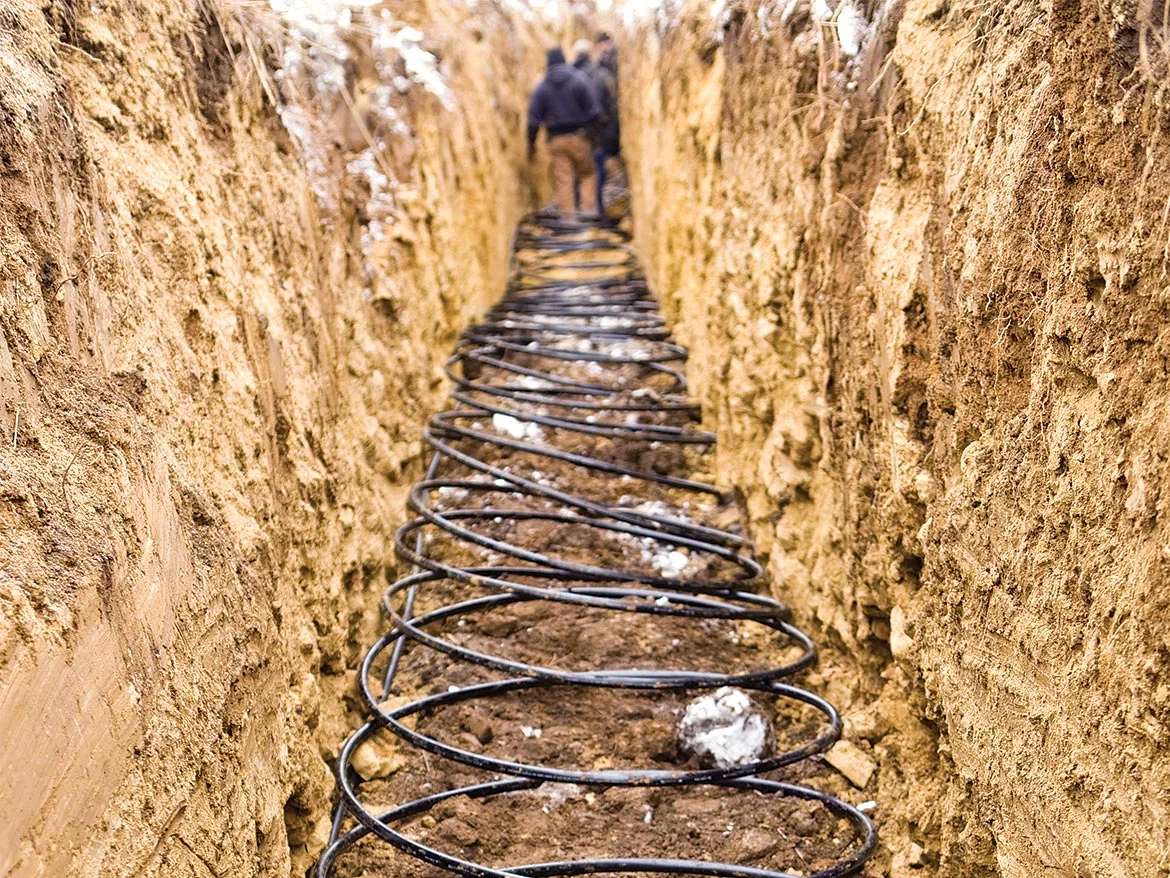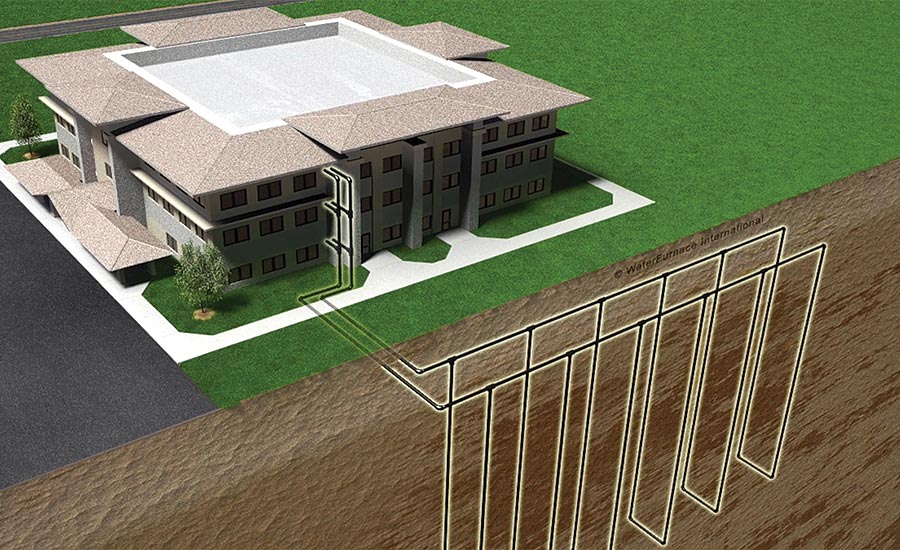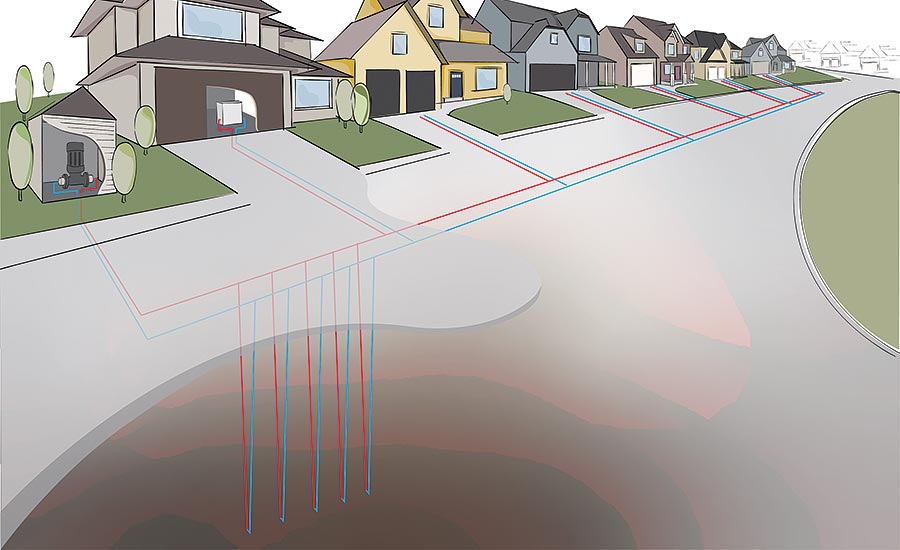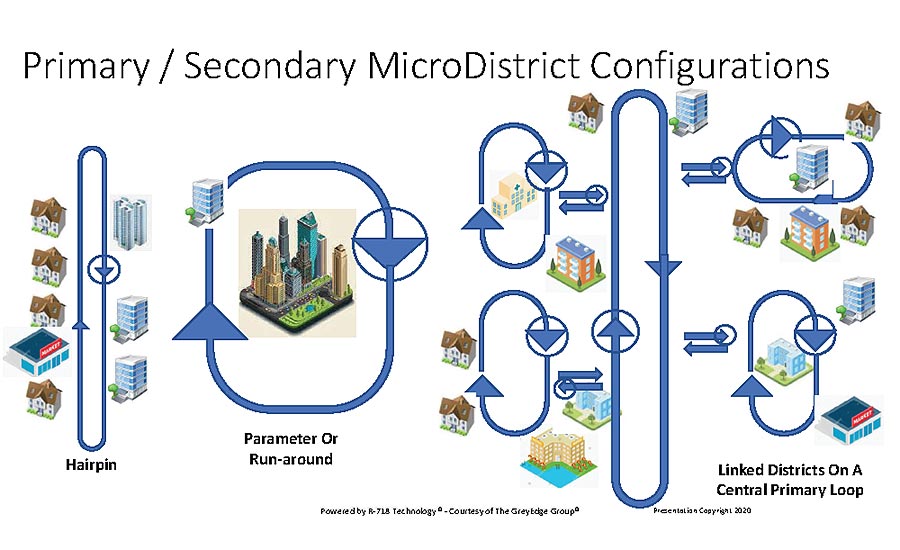Breaking down barriers
2021 UMC sets geothermal standards.

BanksPhotos/E+ via Getty Images
With the release of the 2021 UMC, IAPMO became the first international code-development organization to provide regulatory guidelines in a mechanical code for installing geothermal energy systems used for HVAC and heating water.
These provisions break down barriers hindering the growth of these technologies. Local codes lack direction, with planners wanting to know things such as “If it’s not in the code, what do we do?” or “Whose jurisdiction is this?”
By providing answers to questions like these, IAPMO is educating developers, assets managers, designers, code officials and others about the benefits of geothermal energy and making it easier to consider them — which is less likely to happen if geothermal isn’t in the code.
Geothermal takes off
While living in caves to avoid temperature extremes is early evidence of geothermal energy use by humans for heating and cooling, it wasn’t until the early 1940s that the heat pump was invented to harness that energy for residential use, followed by the first commercial application later that same decade.
The principle behind this technology, which has basically remained unchanged, relies on the fact that below a certain depth, the earth maintains a constant temperature of around 50° F. Transferred to water or refrigerant in loops of underground pipes, this heat can be used for heating and cooling.
With the availability of inexpensive fossil fuels for above-ground air exchange systems that were less expensive and easier to install and maintain, however, geothermal languished until the 1970s oil crisis, when Western European and Nordic countries began using it extensively.
Subsequent years saw the development of higher efficiency, closed-loop heat exchange systems that were maintenance-free for up to 50 years, as well as vertically installed geothermal systems that required significantly less space than loops buried horizontally.
Driven by innovations like these, the availability of state and federal tax credits and the desire to contain energy costs by converting to more sustainable sources, the geothermal heat pump market in the U.S. is itself heating up and is projected to surpass $2 billion annually by 2024.


Geothermal code evolution
Hugo Aguilar, IAPMO’s senior vice president of codes and standards, points out that while “heat pumps using the earth or a body of water” were touched on in the 2012 Uniform Mechanical Code (UMC), no specifications for them were included. The 2021 UMC, on the other hand, “has an entire appendix with specifications for geothermal applications that includes sections on groundwater, closed loop, open loop and direct exchange systems.”
According to Aguilar, the 2024 UMC will add another application known as ATL (Ambient Temperature Loop), which he describes as “a hybrid solution that is essentially a modification of traditional geothermal systems.” Featuring a central heat pump and a variety of heat sources and heat sinks, District ATL distributes geothermal energy to and among buildings through a closed-loop piping system. Heat exchangers in each building then transfer that energy to their own systems for use with HVAC and hot water heating.
The potential of District ATL
District ATL is a big geothermal loop, running between buildings and floors within buildings, that’s bidirectional and can heat and cool using the same water.
This permits those in “environmental neighborhoods” to share energy while maintaining control of their own energy use. For example, waste heat rejected by an office building’s AC system can be used by a neighboring residential development for preheating water, lowering the cost of energy and reducing the district’s need to purchase new sources.

Municipalities and utilities can also take advantage of other thermal opportunities with District ATL that include granting credits to buildings that operate to the net advantage of others to encourage conservation, installing community ground loops that lower installation costs and using recycled wastewater in order to preserve limited water resources.
Committed to sustainable energy
Among sustainable energy sources, geothermal is far more efficient than wind or solar and can easily be stored and shared, giving it not just the potential for lowering the cost of energy, but the ability to actually reduce energy consumption, as well.
By bringing geothermal into the UMC, IAPMO helps overcome obstacles that stand in the way of its development. And, as these systems continue to evolve, IAPMO will be keeping its ear to the ground, so to speak, to stay on top of new developments.
A special thank you to: Brian Urlab, Salas O’Brien, and Cary Smith, The GreyEdge Group.
Looking for a reprint of this article?
From high-res PDFs to custom plaques, order your copy today!









